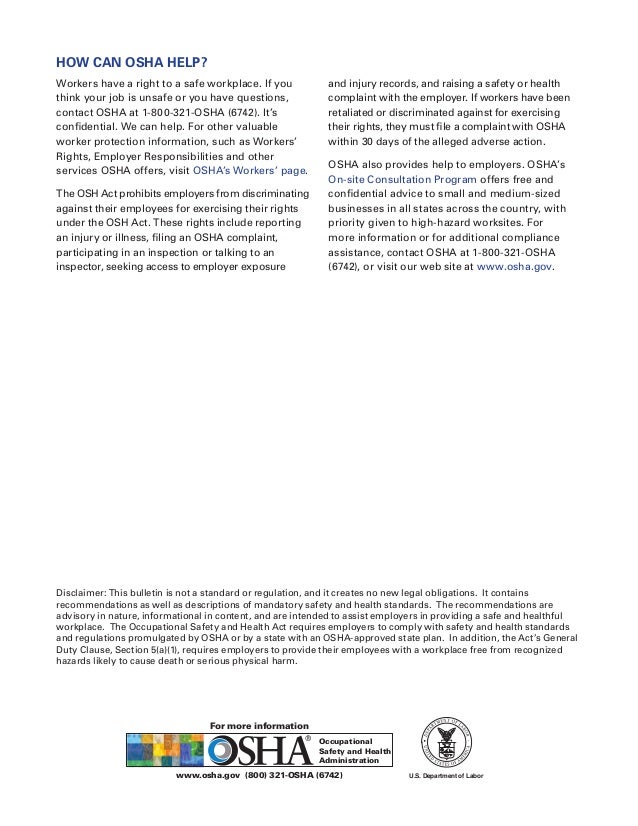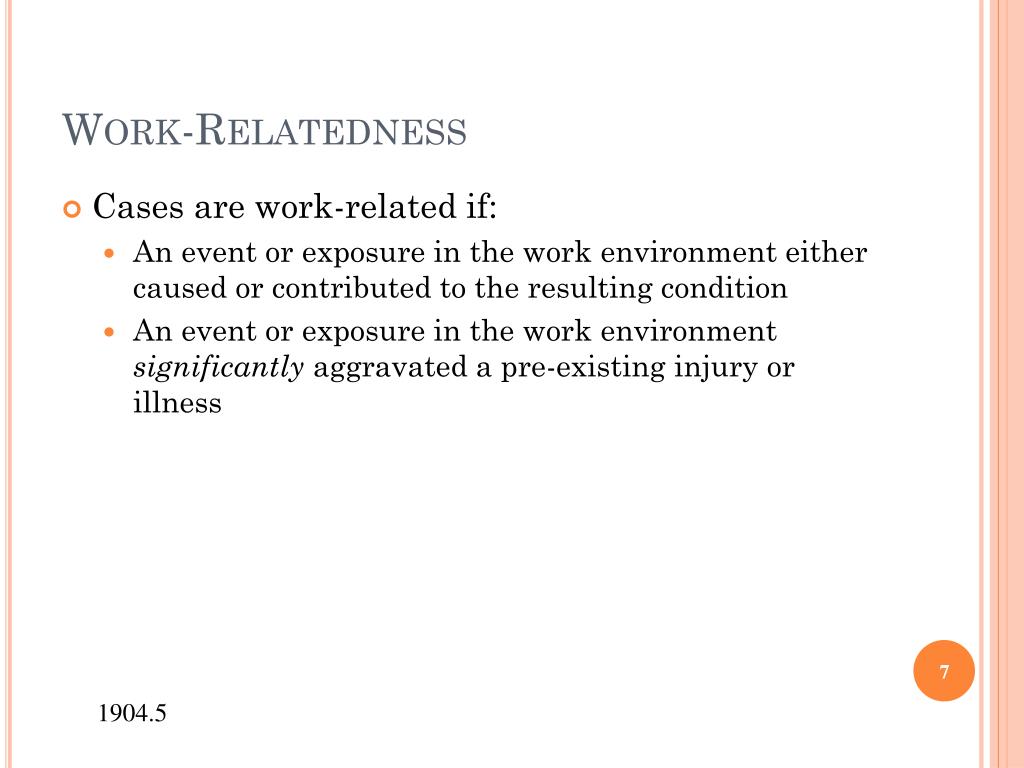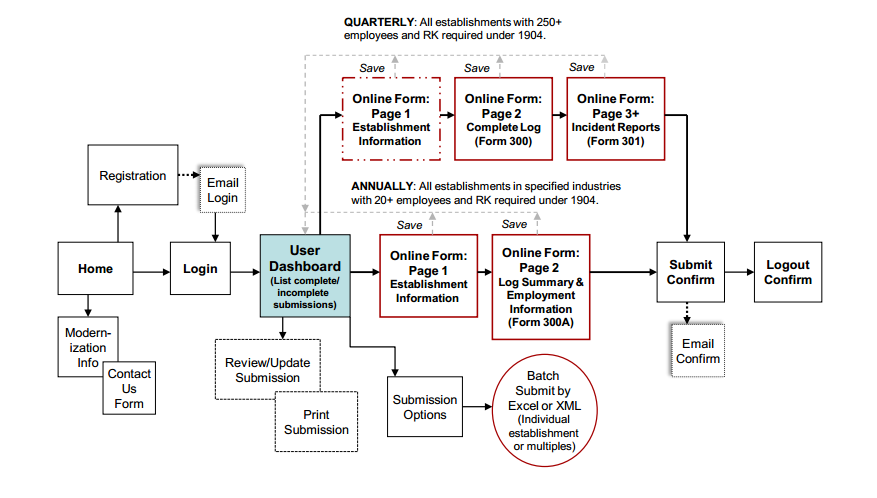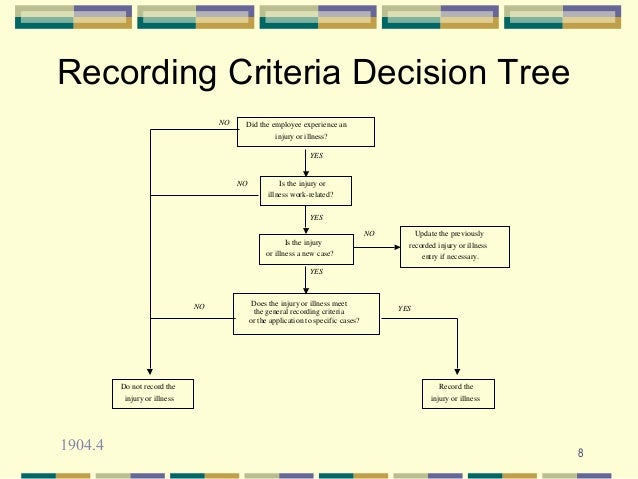Table of Content
- Fall Protection in Vehicle-Mounted Elevating and Rotating Aerial Devices
- Fatal Work Injuries in 2021 Up Almost Nine Percent from 2020
- OSHA: Incident Reporting and Recordkeeping
- Are Remote Work Locations “Establishments” and Require Separate Recordkeeping Forms?
- Everything You Need to Know About OSHA Recordkeeping
- Where and When Do You Post Your Logs?
OSHA says that if they work for you — in any capacity, including “day-to-day supervision” — then a recordable injury needs to go on your 300 log. One of the most common mistakes is recording every incident in an attempt to avoid a fine. Adding too many non-recordable injuries to the log can raise your incidence rate, which can lead to more OSHA inspections and even cause your insurance rates to grow. You may even struggle to land contracts if it looks like you have a poor safety record.
Read the proposed rule and the comments submitted by members of the public including workers and worker groups, affected industries, and other interested parties. In addition, you may examine all supporting materials for the proposed rule on this site. Establishments with 20 or more employees, in certain high-hazard industries, continue to electronically submit Form 300A Annual Summary information once a year to OSHA. Here are 11 basic rules all employees who handle hazardous materials should know and follow. The fatal work injury rate in 2021 was 3.6 fatalities per 100,000 full-time equivalent workers—up from 3.4 per 100,000 FTE workers in 2020 and up from the 2019 pre-pandemic rate of 3.5, according to the BLS’s Census of Fatal Occupational Injuries released December 16. The 3.6 fatal occupational injury rate in 2021 also was the highest annual rate since 2016, according to the BLS.
Fall Protection in Vehicle-Mounted Elevating and Rotating Aerial Devices
The OSHA Recordkeeping Advisor is one of a series of elaws Advisors developed by the U.S. Department of Labor to help employers and employees understand their rights and responsibilities under Federal employment laws. To learn more about DOL's efforts to ensure safe and healthful working conditions for America's workers, visit the OSHA website. This OSHA webinar will review the requirements for OSHA 300 record keeping, including the basic tenants of coverage, recording criteria, forms, and postings.

This webinar will clarify the role of supervisors under OSHA and provide them with tools to be effective in their jobs and promote safety. This webinar on Cal/OSHA Enforcement and Defenses will cover the recent changes in the law, specifically the four most significant developments in Cal/OSHA enforcement and defense that will have an impact in 2011. FFVA Mutual offers a variety of services, training and resources at no additional cost to our policyholders.
Fatal Work Injuries in 2021 Up Almost Nine Percent from 2020
In contrast, a home-based worksite is an area of an employee’s personal residence where the employee performs work of the employer (e.g., home manufacturing operations such as industrial sewing or woodworking). In other words, if an injury requires an employee to receive medical treatment beyond first aid or go on restricted and/or modified duty, then it goes on the OSHA 300 log. OSHA recordkeeping requirements aren’t there to rub workplace injuries in your face or shame you.

The point of these strict requirements is to track illnesses and injuries so that you can prevent them in the future. Recording these helps you identify patterns and correct dangerous or hazardous conditions. In other words, you won’t record every COVID-19 case that appears in your workplace.
OSHA: Incident Reporting and Recordkeeping
Your OSHA recordkeeping obligations not only keep your business compliant with federal regulations but also keep your employees safe from preventable injuries and illnesses. Just because OSHA no longer forces you to use electronic filing for Form 300 and Form 301 doesn’t mean you should revert back to paper or a spreadsheet. In addition, your Form 300 recordkeeping affects your efficient and accurate completion and reporting of Form 300A annually. You can use a digital safety management system, like Safesite, to log events in real-time and synchronize your data so that your entire team can see it.

(Certain low-risk industries are exempted.) Minor injuries requiring first aid only do not need to be recorded. Violations included failing to record injuries and illnesses, misclassifying injuries and illnesses, not recording injuries and illnesses within the required time, and not providing OSHA with timely injury and illness records. While using this Advisor, please remember that you should treat incidents such as any cut, laceration, needlestick, splash with bodily fluid, or exposure to tuberculosis as an injury or illness. Today if you need training for recordkeeping of occupational injuries and illnesses to improve your workplace safety culture and save you money on OSHA violation penalty fees. Whether it is to reduce costs of operating a physical place of business, address pandemic reasons or allow employees to have a better work-life balance, more and more workers are working from home.
That must be recorded are those severe enough to warrant medical treatment beyond first aid. The Basics of Incident Investigations Webinar Without a proper incident investigation, it becomes difficult to take preventative measures and implement corrective actions. Watch this on-demand webinar for a step-by-step process of a basic incident investigation, how to document your incident investigation findings and analyze incident data, and more. Employers must summarize the time, location, and people involved for each incident.

How well are you able to manage workplace safety incidents alongside other key safety tasks? This form logs details of work-related injuries that occur at a single location (or “establishment”) in a given calendar year. As such, employers must fill out and maintain a separate OSHA Form 300 log for each of their permanent workplaces. These logs should provide details of each work-related injury, including the date it took, details about the injury, the number of missed or restricted work days, number of days away from work, number of job transfer days and other relevant information. Employers have 7 calendar days to log the work related injury from the time they learn of the injury. For other home-based work, such as home manufacturing operations, OSHA will only conduct an inspection if a complaint indicates that a violation of a safety or health standard exists that threatens physical harm or that an imminent danger exists.
Efficient EMS-OHSMS Manual and Procedures are fully integrated and related forms are included to meet both the ISO and OHSAS requirements. S requirements for preventing accidental release of energy or accidental start-up of equipment. You will learn what documents to have in place, including a written lockout/tagout plan, and how to implement it.

If it is related to the incident, the total number of days away should be estimated and recorded. Fill in the number of days the worker was away from work, had restricted work activity or was on a job transfer. OSHA says that for it to be recordable, a new case of COVID-19 must be work-related, confirmed by a laboratory test, and meet one or more of the recording criteria. You can also ask employees for their safety and health concerns and suggestions, as they have first-hand experience on the workfloor. The OSHA 300 log must be completed for every location in which an incident occurs.
If an employee works at multiple establishments instead of a single one, the employer would need to assign them to an establishment for recordkeeping purposes. OSHA's health and safety inspection program is directed primarily toward industrial and commercial establishments and construction sites. We do not ordinarily conduct inspections of home-based workplaces, although from time to time we have visited private homes or apartments to investigate reports of sweatshop-type working conditions in the garment industry and other businesses. We would also investigate work-related fatalities occurring in home-based workplaces.

Are you an environment, health, and safety professional with something to contribute to your professional community? On December 16, Parker also issued a statement following a report from the Bureau of Labor Statistics that fatal workplace injuries increased in 2021. Following inspections at six warehouse facilities, the e-commerce company now faces up to $29,000 in proposed penalties. If a physician or licensed healthcare worker prescribes the worker to stay at home for a certain number of days, but they choose to come back to work prematurely, then you still need to record the day count as prescribed by the physician. Describe the case as specifically as possible on the form, including the exact location and circumstances of the occurrence.

No comments:
Post a Comment